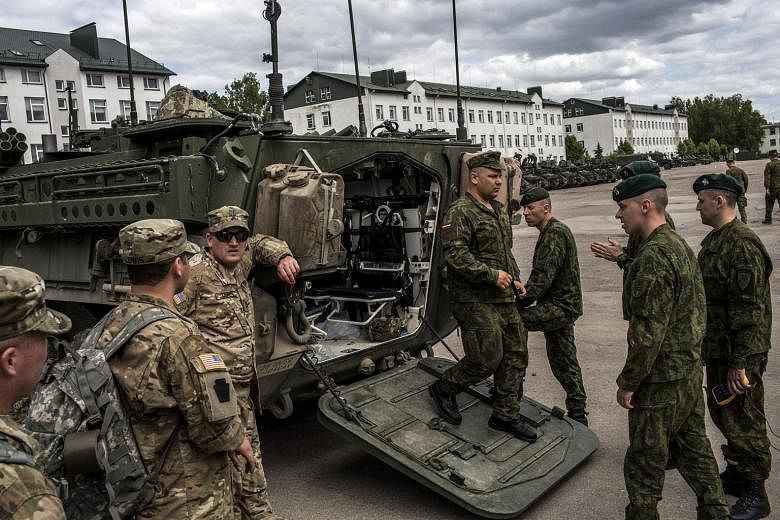WASHINGTON • United States President Barack Obama plans to substantially increase the deployment of heavy weapons, armoured vehicles and other equipment to Nato countries in Central and Eastern Europe, a move that administration officials said was aimed at deterring Russia from further aggression in the region.
The White House plans on paying for the additional weapons with a budget request of more than US$3.4 billion (S$4.8 billion) for military spending in Europe next year, officials said on Monday, more than quadrupling the current budget of US$789 million.
The weapons and equipment will be used by US and Nato forces, ensuring that the alliance can maintain a fully armoured combat brigade in the region at all times.
Though Russia's military activity has quietened in eastern Ukraine in recent months, Moscow continues to maintain a presence there, working with pro-Russian local forces.
Officials said the additional Nato forces were calculated to send a signal to President Vladimir Putin that the West remains deeply suspicious of his motives in the region.
"This is a longer-term response to a changed security environment in Europe. This reflects a new situation, where Russia has become a more difficult actor," said a senior official.
It is not clear how Russia will react to the fortified military presence along Nato's eastern border.
Since the signing of a ceasefire agreement last year, Mr Putin's government has tried to ease tensions with the West.
Officials said the Russian government was eager for the US and Europe to roll back economic sanctions, which suggested that it would not escalate tensions over the new military commitments.
But outside analysts were surprised by the magnitude of the increase in military funding for Europe, which is part of an overall budget request of US$580 billion for the Pentagon.
Mr Obama, according to a defence official, is also going to ask Congress for a 35 per cent increase - US$7 billion - to fight Islamic State in Iraq and Syria (ISIS) militants.
Some analysts said the increased funding and deployments would certainly rattle Russia.
Among the countries where the equipment and additional forces could be deployed are Hungary, Romania and the Baltic countries.
While the increase in funding for Europe is significant, the administration is proposing that the money come out of a separate war-funding account that is meant to pay for operations in the conflicts in Iraq and Syria, as well as the continued US military presence in Afghanistan.
That means it is a one-time request, not necessarily a continuing commitment.
The weapons and equipment could also be deployed along Nato's southern flank, where they could help in the fight against ISIS or in dealing with the influx of migrants from Syria.
Eastern European countries have expressed concerns about Russia. In particular, representatives from the Baltic countries - Estonia, Latvia and Lithuania - have been asking for a big statement of US military support, officials said.
NEW YORK TIMES

